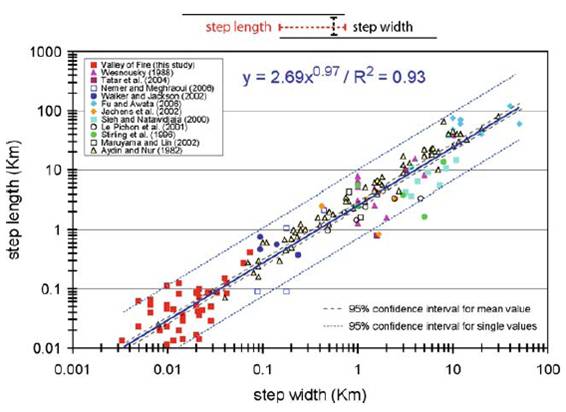| |||||||
|
|
|||||||
|
|
|||||||
| Scaling between Fault Step Length and Step Width | |||||||
|
Figure 1 shows a compilation of step length versus step width data for strike-slip faults (de Joussineau and Aydin, 2009). These authors interpreted the trend as linear power law. Self similarity of strike-slip fault steps with pull-aparts and pushups was previously proposed by (Aydin and Nur, 1982) based on a data set less extensive than that used in Figure 1. This notion was also supported by experimental data (Otsuki and Dilan, 2005). The underlying mechanism responsible for this scaling relationship is thought to be fault interaction (see Aydin and Schultz, 1990).
| |||||||
| Reference: |
|||||||
| Aydin, A., Nur, A., 1982 Aydin, A., Schultz, R.A., 1990 de Joussineau, G., Aydin, A., 2009 Otsuki, K., Dilov, T., 2005 Peacock, D.C.P., Sanderson, D.J., 1995 |
|||||||
|
Readme | About Us | Acknowledgement | How to Cite | Terms of Use | Ⓒ Rock Fracture Knowledgebase |
|||||||
